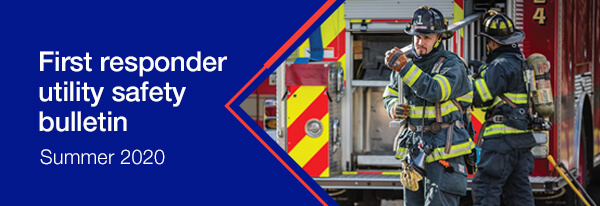| Trouble viewing this email? Click here. |
 |
| Natural gas explosions: Your key response strategies |
How explosions happen
Natural gas explosions occur when leaking gas accumulates in enclosed areas. Gas that combines with air above ground, below ground or in any type of conduit can form a highly volatile mixture; when the concentration reaches 5 to 15 percent and an ignition source is present, an explosion can occur. |
 |
| The ignition of accumulated gas can have devastating consequences. Take all reports of gas leaks seriously and take immediate action to identify the source of the leak, shut off the fuel source and eliminate ignition hazards. It's much better to be overly conservative than to underestimate the risk. |
Explosion severity
The severity of an explosion depends on the volume of released natural gas and the pressure under which the gas is placed. If the gas is underground or trapped in an enclosed space, the pressure can be very high, resulting in an extremely hazardous situation. Fireballs from natural gas explosions have been reported as high as 1,000 feet and have been known to reduce multiple buildings to rubble. |
 |
| If the gas leak is outside, the natural gas released will rise and often disperse on its own. However, even outside leaks can enter enclosed spaces and produce an explosion if the right concentration of gas finds an ignition source. |
Explosion response and evacuation precautions
When responding to the report of a natural gas explosion, immediately notify and request the response of National Grid through your dispatcher, and take these precautions while initiating operations: |
| 1. |
 |
Approach the incident scene cautiously. Park safely at least 100 feet from involved structure(s), out of the collapse zone and away from manhole covers, gas valve covers and storm sewer grates. |
|
| 2. |
 |
Wear full PPE. An explosion can create an atmosphere immediately dangerous to life and health. Full PPE including self-contained breathing apparatus (SCBA) is essential for all first responders. |
|
| 3. |
 |
Create an exclusion zone that isolates the leak area for at least 330 feet in all directions. Secure the area with caution tape and reroute traffic as needed. |
|
| 4. |
 |
Initiate the evacuation of the area. Work with police to clear the area as soon as possible after an explosion has occurred. Evacuate 100 to 800 meters (or 330 feet to ½ mile), per the DOT Emergency Response Guide. The incident commander will make the final determination of the extent of the evacuation. |
|
| 5. |
 |
Triage and treat the injured. |
|
| 6. |
 |
Establish a water supply and extend handline(s) with a fog nozzle(s) to limit fire spread and provide operational flexibility. Do not extinguish gas-fed fires, as this will allow gas to accumulate and reignite. |
|
| 7. |
 |
Establish a rapid intervention team (RIT) for first responder safety. |
|
| 8. |
 |
Establish hot, warm and cold zones. |
|
| 9. |
 |
If possible, verify evacuation of occupants through a secondary search. |
|
| 10. |
 |
Initiate monitoring of the area with multiple combustible gas indicators (CGIs). |
|
| 11. |
 |
Be aware that unburned gas may continue to accumulate in confined areas and present a secondary explosion hazard. Exercise extreme caution when approaching and entering the hot zone. |
|
| 12. |
 |
Control utilities. In extreme or prolonged situations, the power should be turned off to the structures or area involved. |
|
|
| Throughout the response, National Grid can provide important guidance to the incident commander (IC), and if needed, work as part of the command team. |
| Situational awareness averts explosion injuries |
|
|
An engine company was dispatched to the report of an odor of natural gas in the area. While responding, dispatch announced that a car had struck a gas meter inside the garage of a two-story, single-family residence. The initial on-scene report noted conditions including damage to the garage door, a hissing noise coming from the garage and the odor of natural gas in the air. The crew immediately went to work evacuating the house and creating a safe exclusion zone. Two minutes after arrival, and while completing the evacuation of five occupants, the house blew up. There were no injuries reported.
The company officer attributed the success of this response to proper size-up, good situational awareness and wearing the complete PPE ensemble. Establishing incident priorities and following them from the beginning also contributed to the positive outcome. |
|
|
Keep yourself, your team and the public safe. Visit firstresponder.ngridsafety.com today to register and
complete your utility safety training. |
|
|
|
| |
| |
|
| To report emergencies, call 911 and National Grid immediately. |
| |
 |
| In case of gas emergencies: |
 |
Long Island and the Rockaways:
911 and 1-800-490-0045 |
 |
Metro New York:
911 and 1-718-643-4050 |
 |
Upstate New York:
911 and 1-800-892-2345 |
 |
Massachusetts:
911 and 1-800-233-5325 |
 |
Rhode Island:
911 and 1-800-640-1595 |
|
|
|
|
| |
|
|
|
| |
| |
|
 |
#12555 © 2020 Culver Media, LLC |
|
| |
|
|
|
 |
|
| |